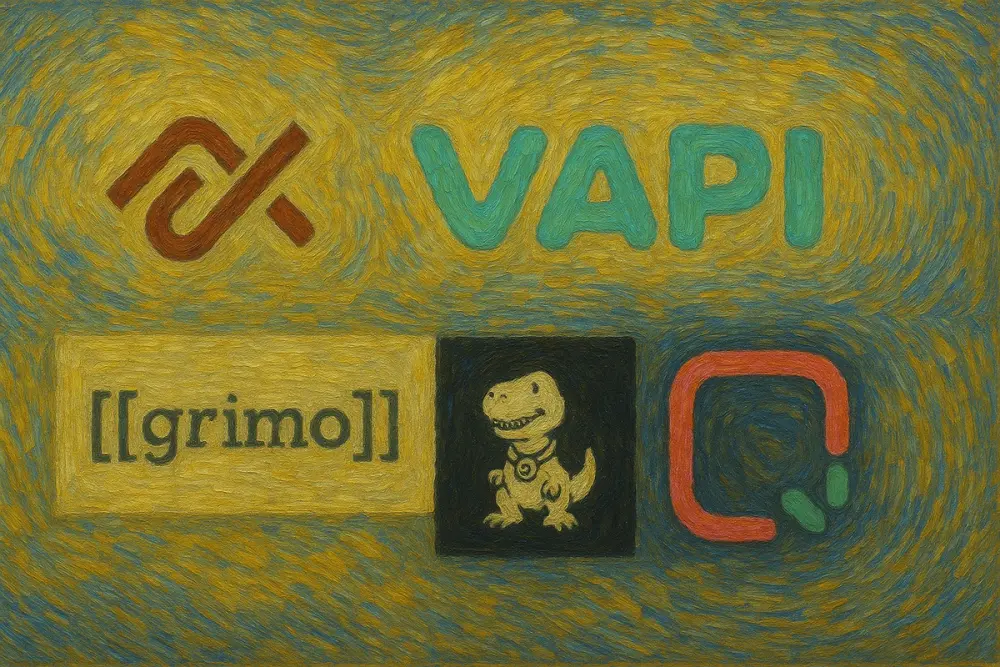Google goes AI bazooka & more (April 10, 2025 edition)

David Pawlan
Co-Founder

Share to AI
Ask AI to summarize and analyze this article. Click any AI platform below to open with a pre-filled prompt.
Hey friends,
It’s official: Google woke up and chose dominance.
After years of letting OpenAI, Anthropic, and even Meta take the spotlight, they just dropped a week’s worth of AI product launches in one day. New chips. New models. Entire new dev platforms. It’s the kind of move you only pull when you’re sitting on trillion-dollar infrastructure and a chip R&D pipeline no one else can touch.
Here’s the breakdown (and why it matters):
🔥 Google’s AI Flex: Everything They Just Launched
Gemini 2.5 Flash – A cheaper, faster, “think-lite” version of Gemini Pro. Designed for real-time use cases where you want speed + decent reasoning, without breaking the bank.
Firebase Studio – A full-stack AI dev environment. Think Cursor or Replit, but native to Google’s ecosystem and built on top of Project IDX. You can prototype apps with natural language, deploy instantly, and preview on devices in seconds.
Ironwood TPU – This 7th-gen chip is a beast: 42+ exaflops per pod, 6x the memory, and built specifically to dominate inference. Translation: Google’s going to run your model faster and cheaper than you ever could.
Agent2Agent Protocol – A new open standard to let agents from different platforms talk to each other. Backed by Salesforce, SAP, PayPal, and the Big Four consulting firms. It’s basically the TCP/IP moment for agent-based AI.

Veo 2, Imagen 3, Lyria, Chirp 3 – Major upgrades to Google’s video, image, music, and voice models. Think multi-modal creativity for enterprise use. All now available in Vertex AI.
Live API – Production-ready voice interface with multilingual support, better detection, and custom voices.
Samsung Ballie Robot – The rolling smart home orb is back, now powered by Gemini and Samsung AI. Samsung tapped Google to help launch their innovation. Projects videos, answers questions, controls your smart home—finally something that might justify that CES hype from 2020.

🧠 Claude Max, Grok API, and the Open Model Arms Race
- Anthropic dropped new paid tiers ($100/mo and $200/mo) for Claude Max. More usage, fewer limits, early access to new models. If you’re serious about workflows, this is welcome.
- xAI’s Grok 3 is now available via API. Two tiers, including Grok 3 Mini. Priced similar to Claude Sonnet, but definitely not trying to undercut Gemini Flash.
- GitHub Copilot quietly introduced rate limits for premium requests. GPT-4o access is capped unless you upgrade.
- Open-source contenders like Cogito v1 (trained using IDA) and Moonshot’s Kimi-VL are closing the gap. Even small labs are shipping open models that beat Llama 4 on certain benchmarks.
🛠 Tools That Caught My Eye
- AlphaXiv – Research any arXiv paper with AI-generated context, summaries, and citations.
- Vapi – Build voice agents that handle real calls with sub-1.5 second latency.
- Grimo & Amurex – Two lightweight tools to streamline creative work and task management.
- EZsite AI – Talk-to-build website builder. No code, just chat.

TL;DR
If last year was the "foundation model" year, this is the "tooling and infra" year. Google’s not just building smarter models—they're building the highways, trucks, and logistics to move those models into everything we do.
The bottom line? You don’t need to be first in AI. You just need to be the platform everyone ends up using. And right now, Google is making a compelling case.
Catch you next time,
David
P.S. If Firebase Studio really is as good as the demo makes it look, expect to see a lot of indie devs switching over this quarter.
Ready to Build with AI?
Turn these insights into reality. Let our expert team help you implement AI solutions tailored to your business needs.
Start Your AI Project